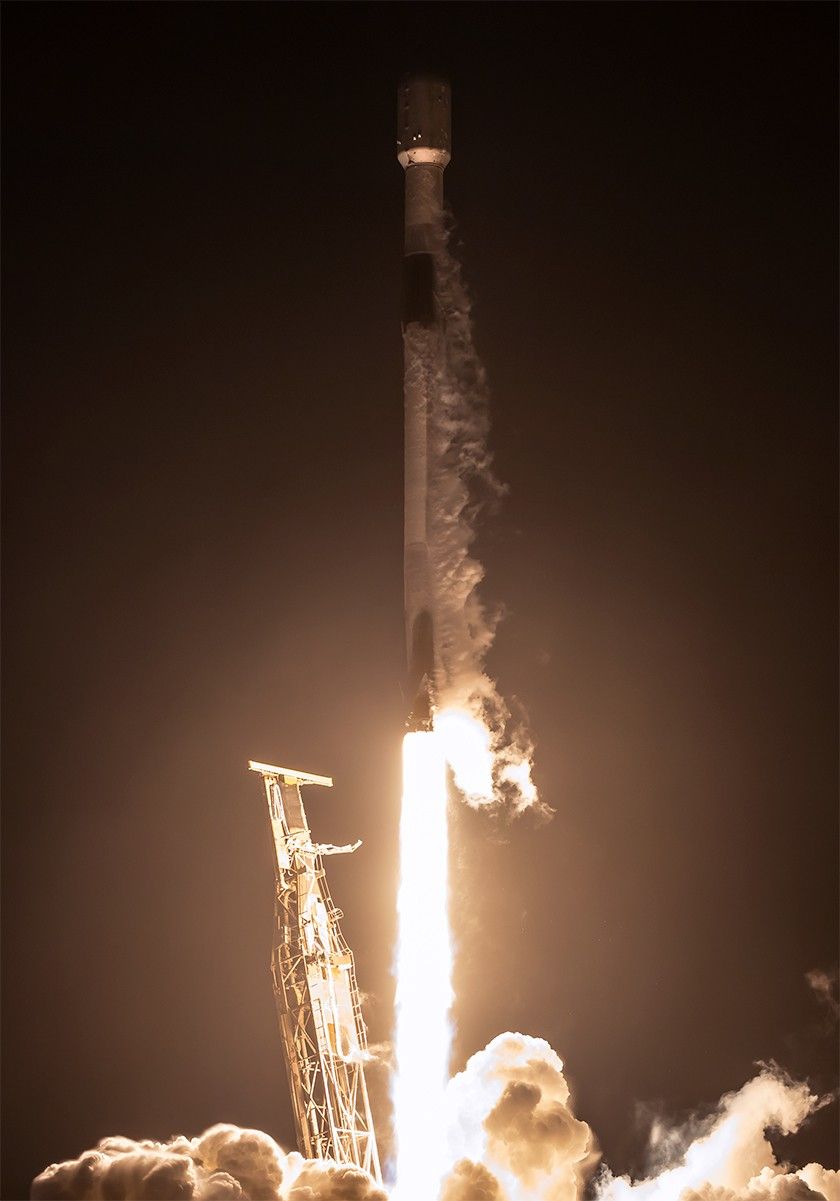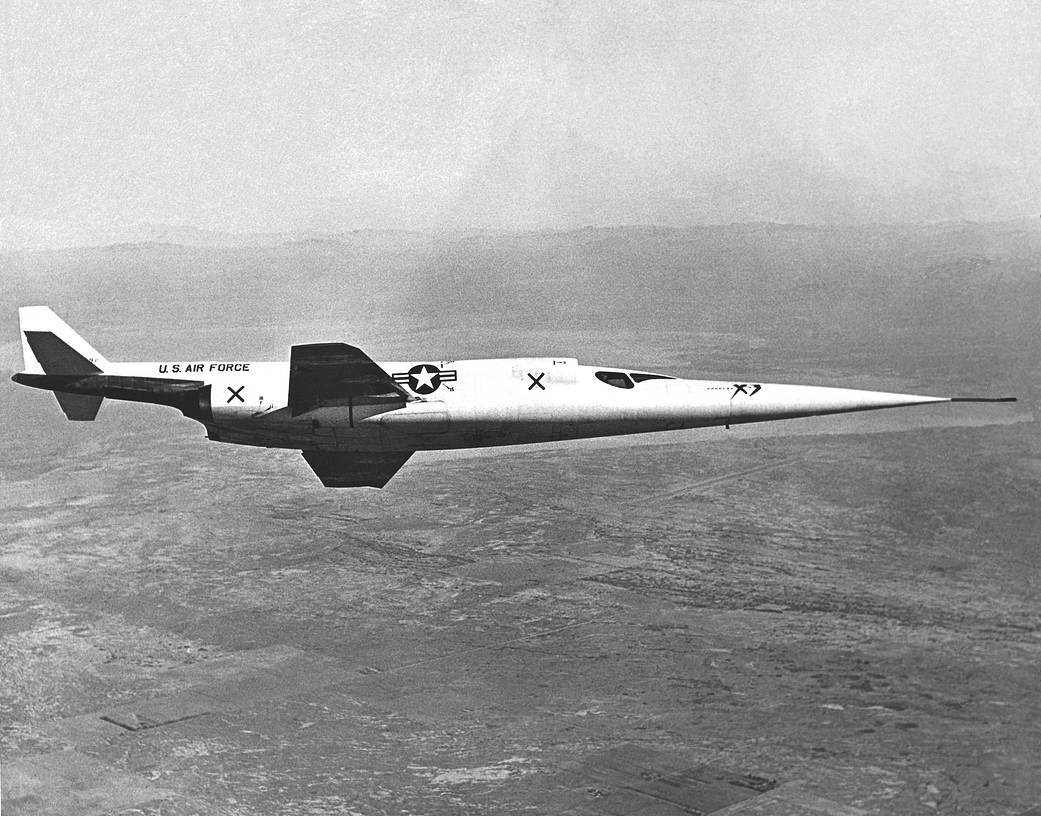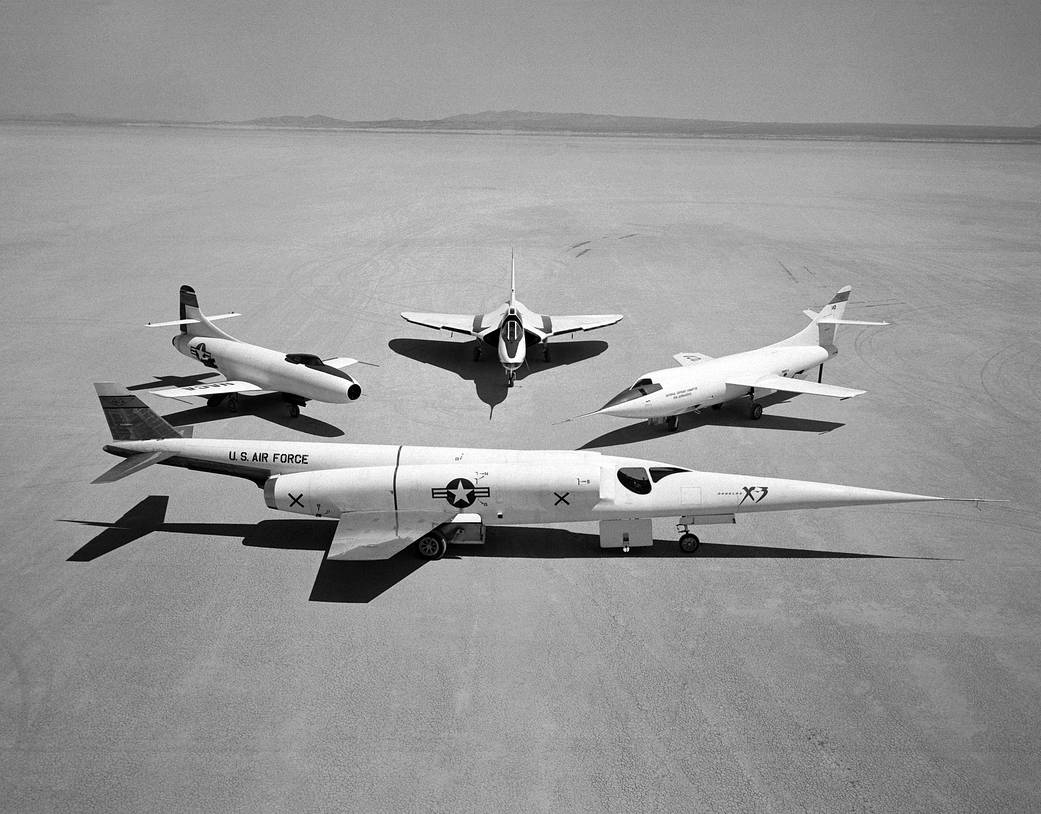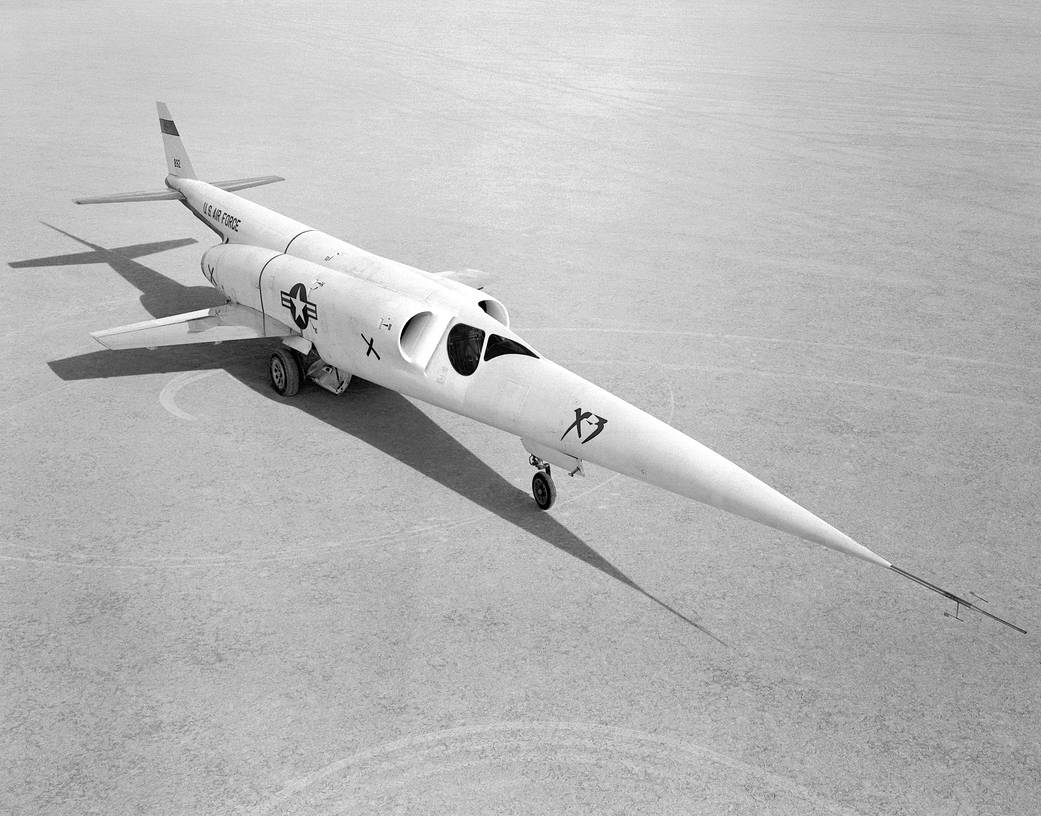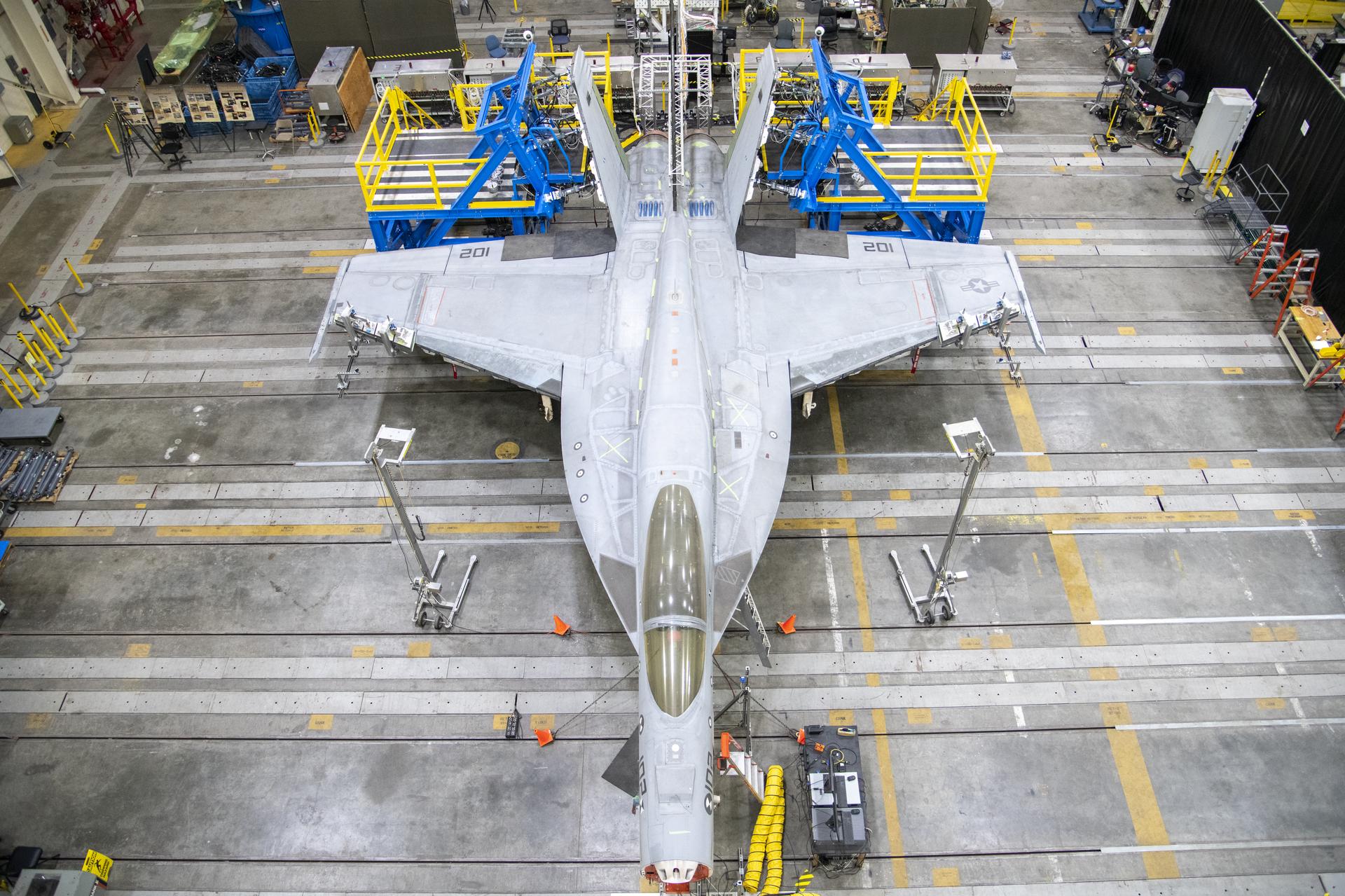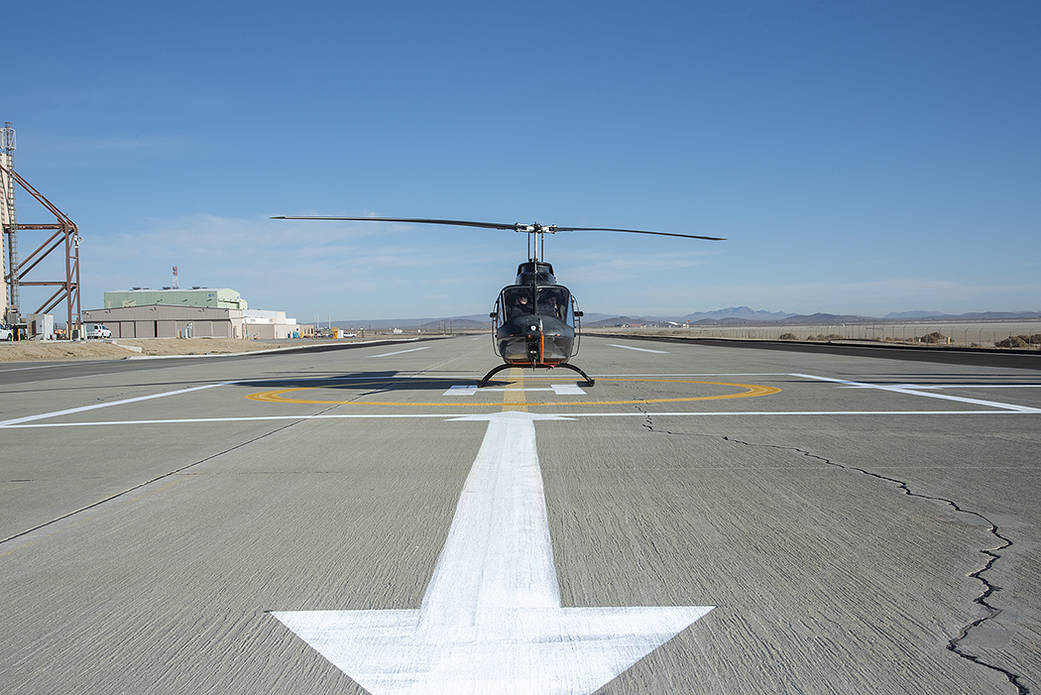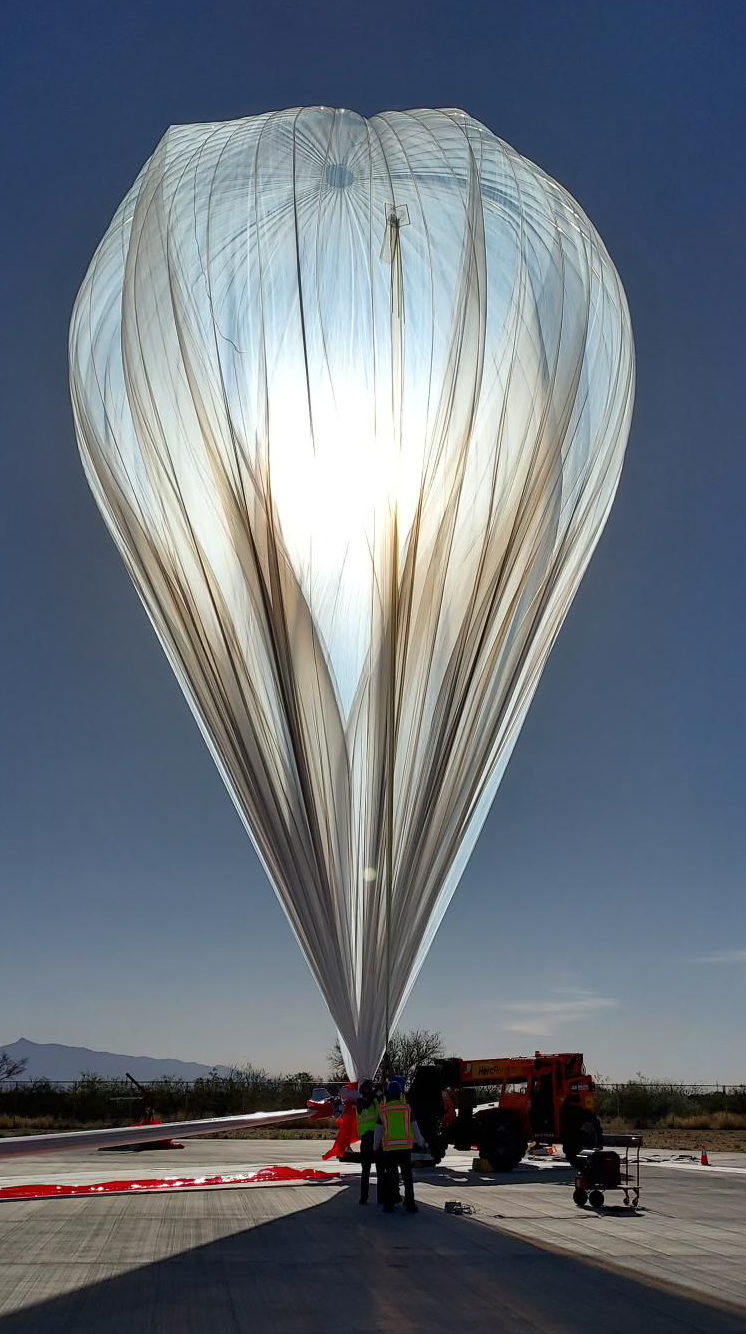The Douglas X-3 Stiletto was the sleekest of the early experimental aircraft, but its research accomplishments were not those originally planned. The goal of the aircraft was ambitious – it was to take off from the ground under its own power, climb to high altitude, maintain a sustained cruise speed of Mach 2, then land under its own power. The aircraft was also to test the feasibility of low-aspect ratio wings, and the large-scale use of titanium in aircraft structures.
Construction of a pair of X-3s was approved on June 30, 1949. During development, the X-3’s planned engines failed to meet the thrust, size and weight requirements. As a result, lower-thrust Westinghouse J34 turbojets were substituted. The first aircraft was completed and delivered to Edwards Air Force Base, California, on Sept. 11, 1952. Due to both engine and airframe problems, the partially completed second aircraft was canceled, and its components were used for spare parts.
The first X-3 “hop” was made on Oct. 15, 1952, by Douglas test pilot Bill Bridgeman. During a high-speed taxi test, Bridgeman lifted the X-3 off the ground and flew it about a mile before settling back onto the lakebed. The official first flight was made by Bridgeman on Oct. 20, and lasted about 20 minutes. He made a total of 26 flights (counting the hop) by the end of the Douglas tests in December 1953. These showed that the X-3 was severely underpowered and difficult to control. Its take off speed was an astonishing 260 knots. More seriously, the X-3 did not approach its planned performance. Its first supersonic flight required that the airplane make a 15-degree dive to reach Mach 1.1. The X-3’s fastest flight, made on July 28, 1953, reached Mach 1.208 in a 30-degree dive.
With the completion of the contractor test program in December 1953, the X-3 was delivered to the U.S. Air Force. The poor performance of the X-3 meant only an abbreviated program would be made, to gain experience with low-aspect ratio wings. Lt. Col. Frank Everest and Maj. Chuck Yeager each made three flights. Although flown by Air Force pilots, these were counted as NACA flight. With the last flight by Yeager in July of 1954, the NACA made plans for a limited series of research flights with the X-3. The initial flights looked at longitudinal stability and control, wing and tail loads, and pressure distribution.
The NACA pilot Joseph A. Walker made his pilot checkout flight in the X-3 on August 23, 1954, then conducting eight research flights in September and October. By late October, the research program was expanded to include lateral and directional stability tests. In these tests, the X-3 was abruptly rolled at transonic and supersonic speeds, with the rudder kept centered. Despite its shortcomings, the X-3 was ideal for these tests. The mass of its engines, fuel and structure was concentrated in its long, narrow fuselage, while its wings were short and stubby. As a result, the X-3 was “loaded” along its fuselage, rather than its wings. This was typical of the fighter aircraft then in development or testing. These tests would lead to the X-3’s most significant flight, and the near-loss of the aircraft.
On Oct. 27, 1954, Walker made an abrupt left roll at Mach 0.92 and an altitude of 30,000 feet.
The X-3 rolled as expected, but also pitched up 20 degrees and yawed 16 degrees. The aircraft gyrated for five seconds before Walker was able to get it back under control. He then set up for the next test point. Walker put the X-3 into a dive, accelerating to Mach 1.154 at 32,356 feet, where he made an abrupt left roll. The aircraft pitched down and reached a g-loading of -6.7, then pitched upward to +7 Gs. At the same time, the X-3 sideslipped, resulting in a loading of 2 Gs. Walker managed to bring the X-3 under control and successfully landed.
The post-flight examination showed the fuselage had been subjected to its maximum load limit. Had the G forces been higher, the aircraft could have broken up. Walker and the X-3 had experienced “roll coupling,” in which a maneuver in one axes will cause an uncommanded maneuver in one or two others. At the same time, several F-100s were involved in similar incidents. A research program was started by the NACA to understand the problem and find solutions.
For the X-3, the roll coupling flight was the high point of its history. The aircraft was grounded for nearly a year after the flight, and never again explored its roll stability and control boundaries. Walker made another 10 flight between September 20, 1955, and the last on May 23, 1956. The aircraft was subsequently retired to the Air Force Museum. Although the X-3 never met its intention of providing aerodynamic data in Mach 2 cruise, its short service was of value. It showed the dangers of roll coupling, and provided early flight test data on the phenomena. Its wing platform was used in the F-104, and it was one of the first aircraft to use titanium. Finally, the X-3’s very high take off and landing speeds required improvements in tire technology.





